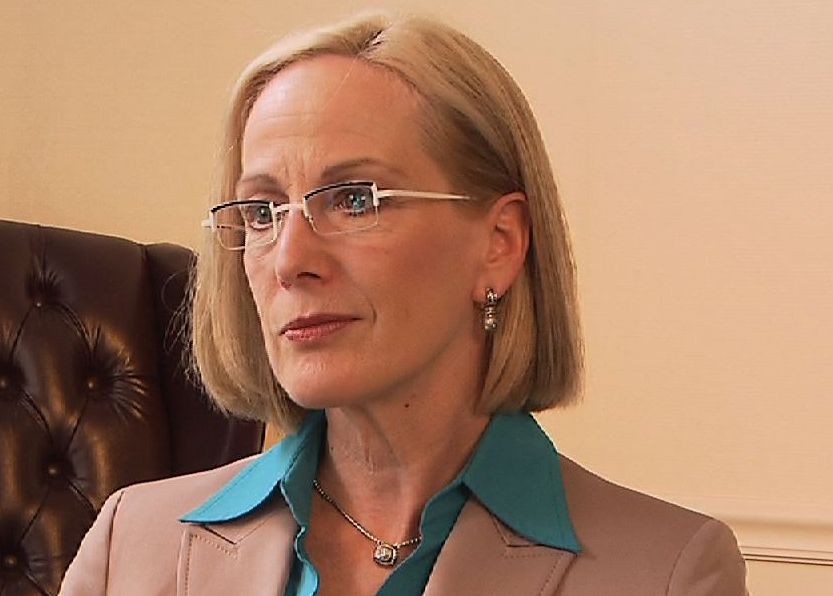Getting the Scoop: How Alliances Can Work with the Media

The media is always hungry for a good story, but what makes a good story requires quick legwork; know-how about how to create a strong narrative; the ability to engage print, online, and broadcast reporters; and the skill to explain succinctly why an Alliance's work matters to the general public.
If a physician is saying many health care stories are boring, then Alliances have their work cut out for them. Jeff Brenner, MD, founder and executive director of the Camden Coalition of Healthcare Providers in Camden, NJ, served as moderator at AF4Q's National Meeting in Chicago to lead a discussion about how Alliances could work more effectively with local and national media. Journalists from print and television joined him on the panel. Dr. Brenner noted health care stories don't have to be boring and asked audience members how quickly they obtain story sources for reporters, but few raised their hands in response.
"Every hand should be up," said Dr. Brenner. "That is your sustainability plan. Good stories operate on a lot of levels, from the concrete to the symbolic to the emotional." And stories, he added, always need to include real people and their experiences.
Health News Matters
Knowing who to pitch your story to is as important as knowing what story to pitch. Health news was the eighth biggest subject covered in national news, comprising 3.6 percent of all coverage and getting more press time than education and transportation, according to 2007-2008 data from the Pew Research Center's Project for Excellence in Journalism in Washington, DC. Network news stations were more likely to include health news in their programming compared with cable news shows, the research found. Health care policy also received coverage during this time period before the Affordable Care Act was signed into law in 2010. However, when reviewing individual conditions, what got the most press was cancer, accounting for more than 10 percent of all health coverage followed by diabetes and obesity, heart disease, HIV/AIDS, and autism.
So what is the media looking for when it comes to a good health care story that will be read in newspapers or on high-traffic websites or seen on television? Reporters who attended the panel moderated by Dr. Brenner repeatedly emphasized that good health care stories focus on impact and generate emotion from readers or viewers. Some of the most interesting stories feature failures, setbacks, and comebacks, and vivid storytelling often involved the organization sharing the story to take risks. "Media hate to be managed by hospital or corporate media staff," said Dr. Brenner.
What also doesn't appeal to reporters is an announcement about a new grant. While Alliances put countless hours into grant proposals and obtaining support in a very competitive environment, actually getting a grant, whether small or significant, does not rate as news to many journalists. "I’m sick and tired of reading about grants," said Merrill Goozner, who in late 2012 was named news editor of Modern Healthcare. "It’s like watching paint dry! Tell me what you are doing with the money."
Telling Your Story
The health care industry is dominated by professionals who emphasize facts, not emotions or narratives. This presents a challenge for Alliances to understand better how to translate their work and link their facts to feelings, creating a strong story that media will share with thousands or millions of people.
Daunting as it may seem, some Alliances already have enjoyed success in getting their stories out to the media. The Albuquerque Coalition for Healthcare Quality located in New Mexico's largest city spent $80,000 for radio and print advertising to educate area residents about whether to go to a hospital emergency room or to visit an urgent care clinic. The ad campaign, called "Is it an emergency or an urgency?" gained traction with local media. For example, with broadcasting, the Coalition spent more than $57,000 on radio advertising yet received more than 1,700 free public service announcements, totaling more than $150,000 in free radio advertising.
The media quickly picked up on this story because the Coalition had a specific, compelling, and very emotional message that resonated with a large audience—everyone. Consumers often choose to use emergency departments because they perceive them as being more convenient or offering better care, possibly tying up resources for people truly needing emergency care. "It's clear the media thought this message was worthwhile," said Jennifer Kemp, senior communications specialist for the Coalition.
Give Reporters What They Need
Once you have your story, is it time to email your pitch to the health care reporter at your local newspaper or television station? If your story has a clear, compelling message that impacts a wide audience, includes emotion (remember, even setbacks and comebacks can make interesting stories), and perhaps provide a moral or lesson learned, then, yes, it's time to pitch.
The next phase comes when the reporter is interested and wants to turn a pitch into a news story. Reporters have extremely tight deadlines; many newspaper and television reporters sometimes have only hours to pull together a story, or, if they are lucky, a few days or even a week or two to conduct a more thorough investigation and complete a draft. Media-savvy Alliances will have their sources, who are the key individuals to be quoted in a story, identified and their contact information made available to reporters when they circulate their pitches. Moreover, Alliances will prepare their sources to expect phone calls from the media. Preparation will enhance both Alliance stakeholders and the Alliances' relationships with the media. Otherwise, if a reporter accepts a pitch, Alliances have to do some quick legwork to get sources who may or may not be available when the reporter needs them, hustling at a pace that may seem different from what they are used to. But don't call reporters just to get their attention, said Dr. Brenner. Call them "because you have a story that needs to be told."
Traditional and New Media: Opportunities for Storytelling
Traditional media—print, television, and radio—continue to serve as primary platforms for mass communication, but social media, including Twitter and Facebook, offer an inexpensive and fast, far-reaching new way to share an Alliance's stories in real-time while fostering consumer engagement. As of May 2013, when AF4Q hosted its national meeting in Chicago, 56 percent of Americans owned a smart phone, and more than two-thirds of adults used social media. Given those numbers, it's no surprise that Maine AF4Q Alliance—the Maine Health Management Coalition, Quality Counts, and the Maine Quality Forum, launched a social media communications campaign to educate consumers about the health care choices available in their state. Social media offered a way to distribute and reinforce the Alliance's multiple messages quickly across Maine's vast geographic and demographic differences; their efforts led to increases in Twitter and Facebook followers. The team also identified a social media coordinator who had defined responsibilities detailing what information would be disseminated via Twitter and Facebook and how often.
Social media interaction is a 21st-century form of storytelling, and whether Alliances call a newspaper reporter with a pitch, buy a 30-second spot on a radio station, or kick off an awareness campaign on Twitter, the bottom line is about communicating what's happening and why it matters. Says Trevor Putnoky, communications specialist for Maine Health Management Coalition, "The more engaging you are, the more [people] will want to engage with you."
| Speakers | |
 Guy Boulton has covered the business of health care and health policy for the Milwaukee Journal Sentinel since 2005. He has worked at The Tampa Tribune, The Cincinnati Enquirer, The Wichita Eagle, and The Salt Lake Tribune. Guy Boulton has covered the business of health care and health policy for the Milwaukee Journal Sentinel since 2005. He has worked at The Tampa Tribune, The Cincinnati Enquirer, The Wichita Eagle, and The Salt Lake Tribune. |
 Jeffrey Brenner is the founder and executive director of the Camden Coalition of Healthcare Providers. He is a family physician and has practiced in Camden for 11 years as a frontline primary care provider for patients of all ages. Jeffrey Brenner is the founder and executive director of the Camden Coalition of Healthcare Providers. He is a family physician and has practiced in Camden for 11 years as a frontline primary care provider for patients of all ages. |
 Kay Colby is a producer in the Health Unit of WVIZ/PBS and 90.3 WCPN ideastream, Cleveland’s combined PBS/NPR station. To date, she has served as lead producer for 13 television programs about various chronic diseases and conditions broadcast as part of ideastream’s awardwinning multimedia health series “Be Well.” Kay Colby is a producer in the Health Unit of WVIZ/PBS and 90.3 WCPN ideastream, Cleveland’s combined PBS/NPR station. To date, she has served as lead producer for 13 television programs about various chronic diseases and conditions broadcast as part of ideastream’s awardwinning multimedia health series “Be Well.” |
 Merrill Goozner provides overall editorial direction and oversees editorial content for the Modern Healthcare magazine, newsletters, and websites. His background includes 30 years as an editor, writer, and journalism educator. He is the author of The $800 Million Pill: The Truth Behind the Cost of New Drugs. Merrill Goozner provides overall editorial direction and oversees editorial content for the Modern Healthcare magazine, newsletters, and websites. His background includes 30 years as an editor, writer, and journalism educator. He is the author of The $800 Million Pill: The Truth Behind the Cost of New Drugs. |
| Read More on Speakers HERE. | |
|
|
@MargotBolon: Theme coming of the State of Partnering with the States - leverage what you've got and listen. #AF4Q
|

